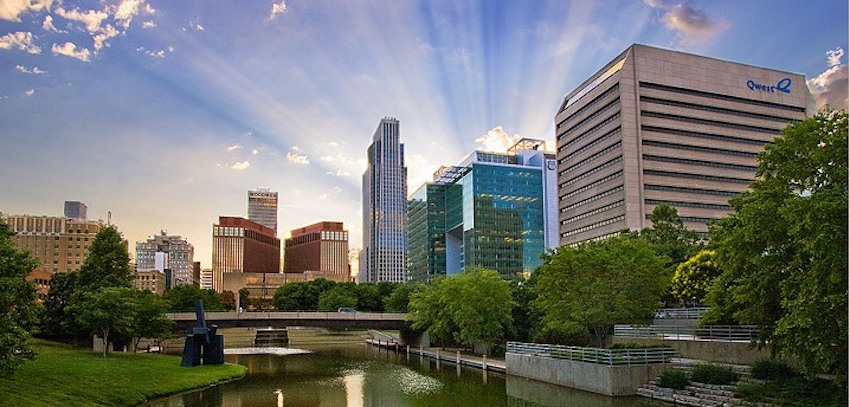
Residents of Omaha, NE, were a little hotter under the collar than usual in 2016.
A LawnStarter study of data from the National Oceanic and Atmospheric Administration (NOAA) shows Omaha ranked No. 1 among the 50 largest U.S. cities for warmer-than-normal weather in 2016.
Last year, Omaha recorded an average temperature of 55.2 degrees, according to NOAA. That’s 4.1 degrees above the 51.1-degree average for 1981 through 2010. Omaha’s 4.1-degree gap was the widest among the 50 largest cities, with NOAA scientist Jake Crouch describing the difference as “really large.”
Five of the top 12 cities on our list witnessed their warmest year on record, while six cities experienced their second warmest year (including Omaha). The other city on our list — Charlotte, NC — had its fourth warmest year on record.
In the chart above, we’ve listed the top five cities and their temperature gaps in 2016 compared with the 1981-2010 average. For data about all 12 cities on our list, see the graphic at the end of this article.
For Omaha, 2016 was the second warmest year in the nearly seven-decade history of weather measurements being taken at the city’s airport. Dating back to 1871, when weather measurements started being gathered in downtown Omaha, 2016 was the fourth warmest year on record. Only four years earlier, in 2012, Omaha set the record for the warmest year at both weather stations, Crouch says.
Omaha wasn’t alone in coping with higher-than-normal temperatures last year. Crouch says 2016 was the second warmest year on record for the Lower 48 states.
“We do have a long-term warming trend,” says Crouch, who works at NOAA’s Center for Weather and Climate in Asheville, NC.
The warmest year on record in Omaha is 2012.
Photo: Visit Omaha
Forecast: Warm Years Ahead
In 2016, that trend was extended thanks in large part to overall climate change as well as the El Niño weather pattern, according to Crouch. El Niño refers to a periodic warming of surface temperatures in the Pacific Ocean, triggering a increase in temperatures in much of the U.S.
In Omaha and elsewhere in the central U.S., the fall and early winter months of 2016 were “really warm,” Crouch says. Throughout Nebraska, seven of the 12 months last year were noticeably warmer than normal, he says.
Looking ahead, it appears that Omaha and lots of other locales will be staring at rising mercury for years to come, according to Michael Mann, a climate scientist at Pennsylvania State University.
“We expect records to continue to be broken as global warming proceeds,” Mann told The New York Times.
Top photo: RIC
LawnStarter provides landscaping services in places like Austin, Dallas, Houston, Fort Worth, and Orlando.







